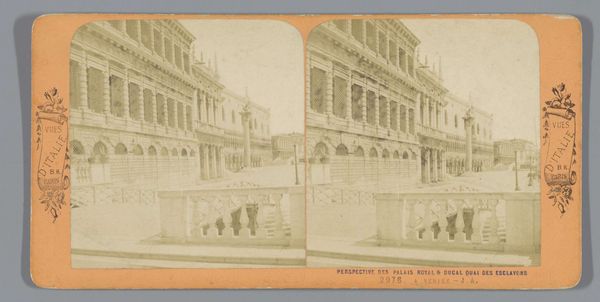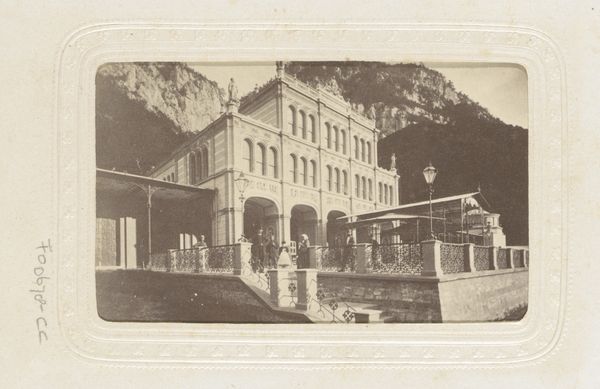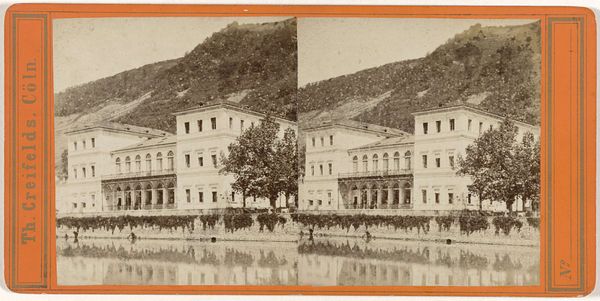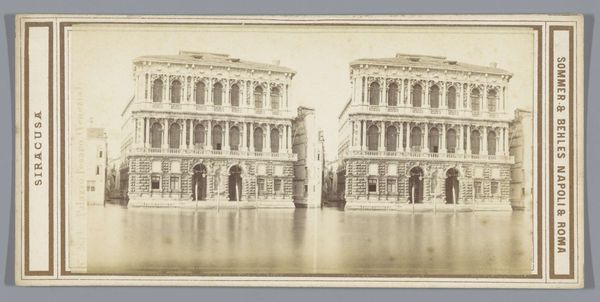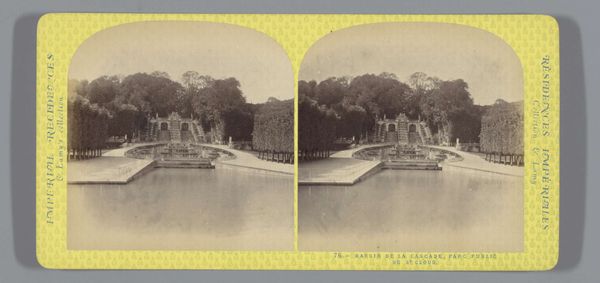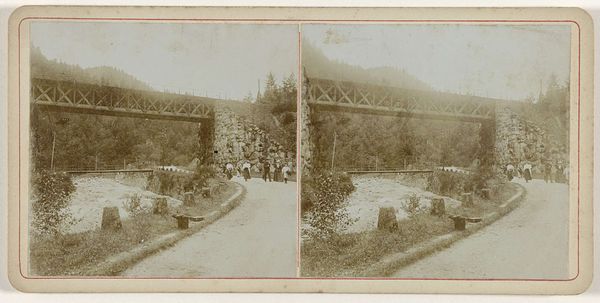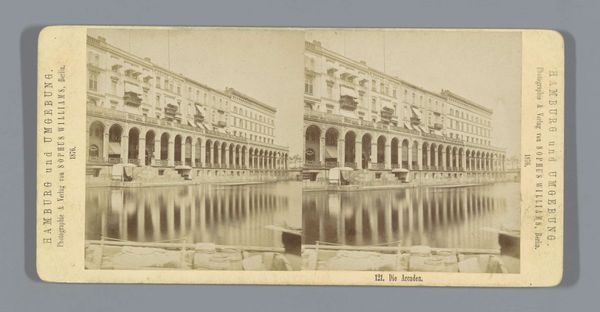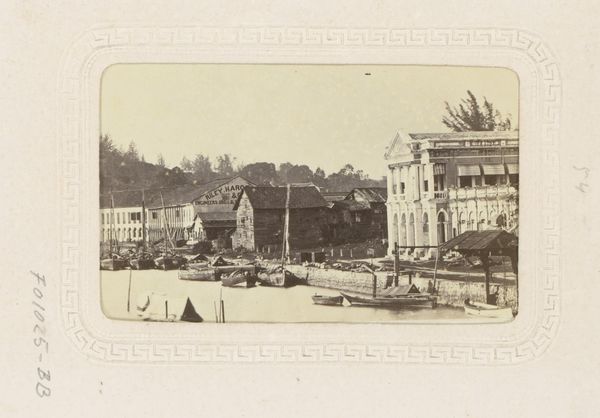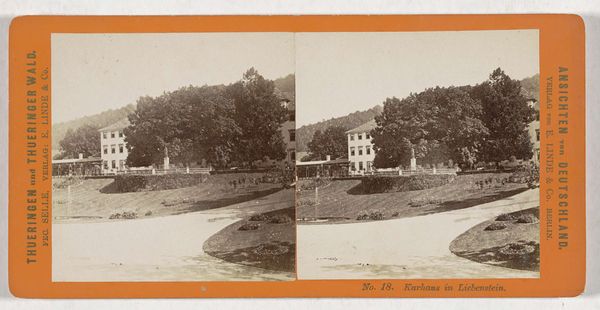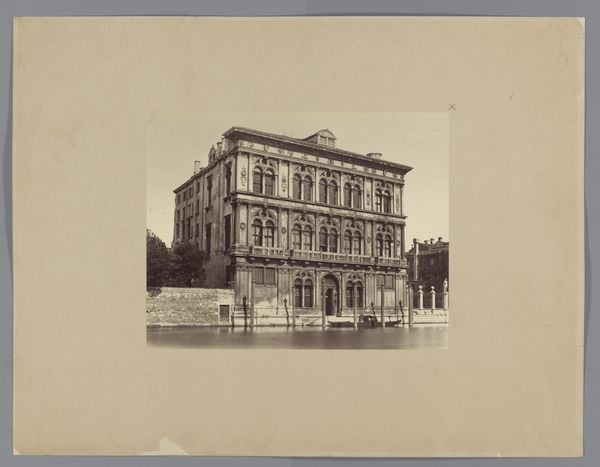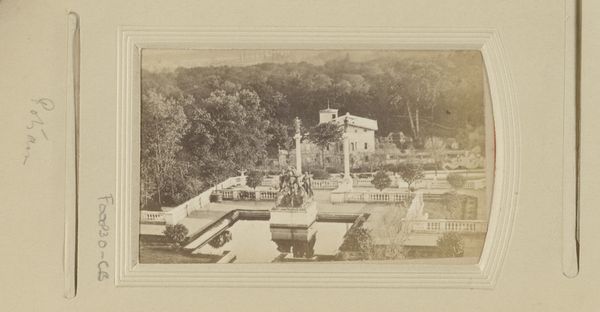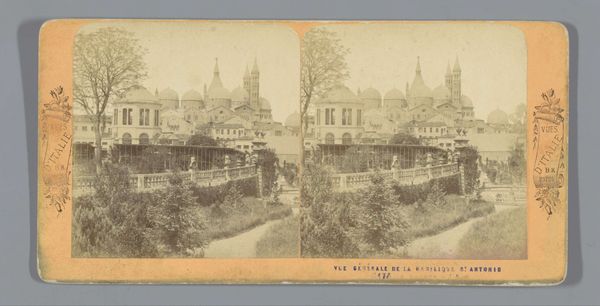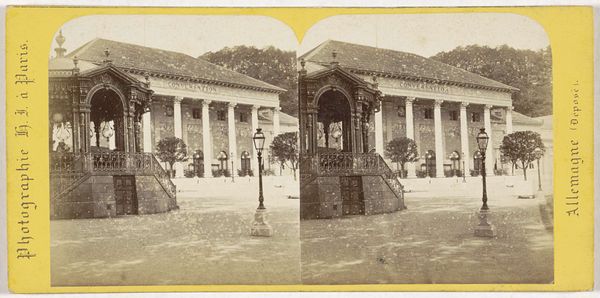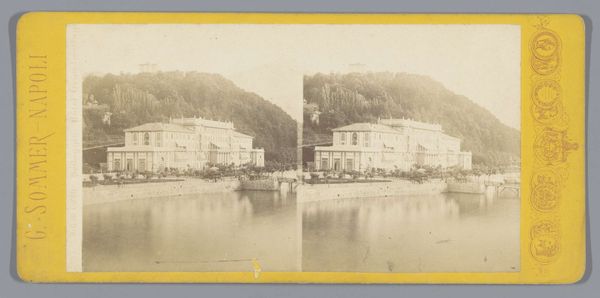
Dimensions: height 88 mm, width 176 mm
Copyright: Rijks Museum: Open Domain
Editor: So, this is "Gezicht op Villa d'Este aan het Comomeer," taken sometime between 1872 and 1876 by Jean Andrieu. It looks like a photographic print. I’m struck by how solid the building appears, like a fortress emerging straight from the water. How do you interpret the symbols at play here? Curator: The image presents a fascinating duality. Note how the solidity of the Villa d’Este, depicted as a structure almost unyielding, contrasts with the fluidity of the lake itself. Water is often used as a symbol for transformation or renewal. The fact that the building is mirrored on the water could imply an introspective assessment of structure. Does that assessment strengthen resolve or present possibilities? Editor: That’s an interesting way to frame it! I hadn't considered the idea of the building "assessing itself." What possibilities does the reflection suggest to you? Curator: Think of the architecture; observe the clear lines, repetitive forms of windows and balconies, symbols of order and control. Juxtapose that with the promise of the Romantic style, and what emerges is the memory of humanity’s attempts to dominate nature… attempts mirrored and perhaps mocked by nature itself, as water transforms every edifice on its surface, every reflection. Look also how light etches texture into the villa, transforming something seemingly rigid into a play of illumination. Editor: So, you see the photograph as a commentary on the relationship between humanity, nature, and time? Curator: Indeed. It seems the artist invites us to consider not just what we build, but how those creations interact with the forces around them, how nature preserves, distorts, and, ultimately, outlasts what we construct. It’s about cultural memory and its evolution. Editor: I didn’t think of it that way at first. Seeing it as a dialogue between the structure and nature makes me rethink its historical context and the impact of time on both the building and its representation. Curator: Exactly! By understanding the symbols present in art, we can see how our world is shaped not only by materials, but memory, reflection, and revision.
Comments
No comments
Be the first to comment and join the conversation on the ultimate creative platform.
